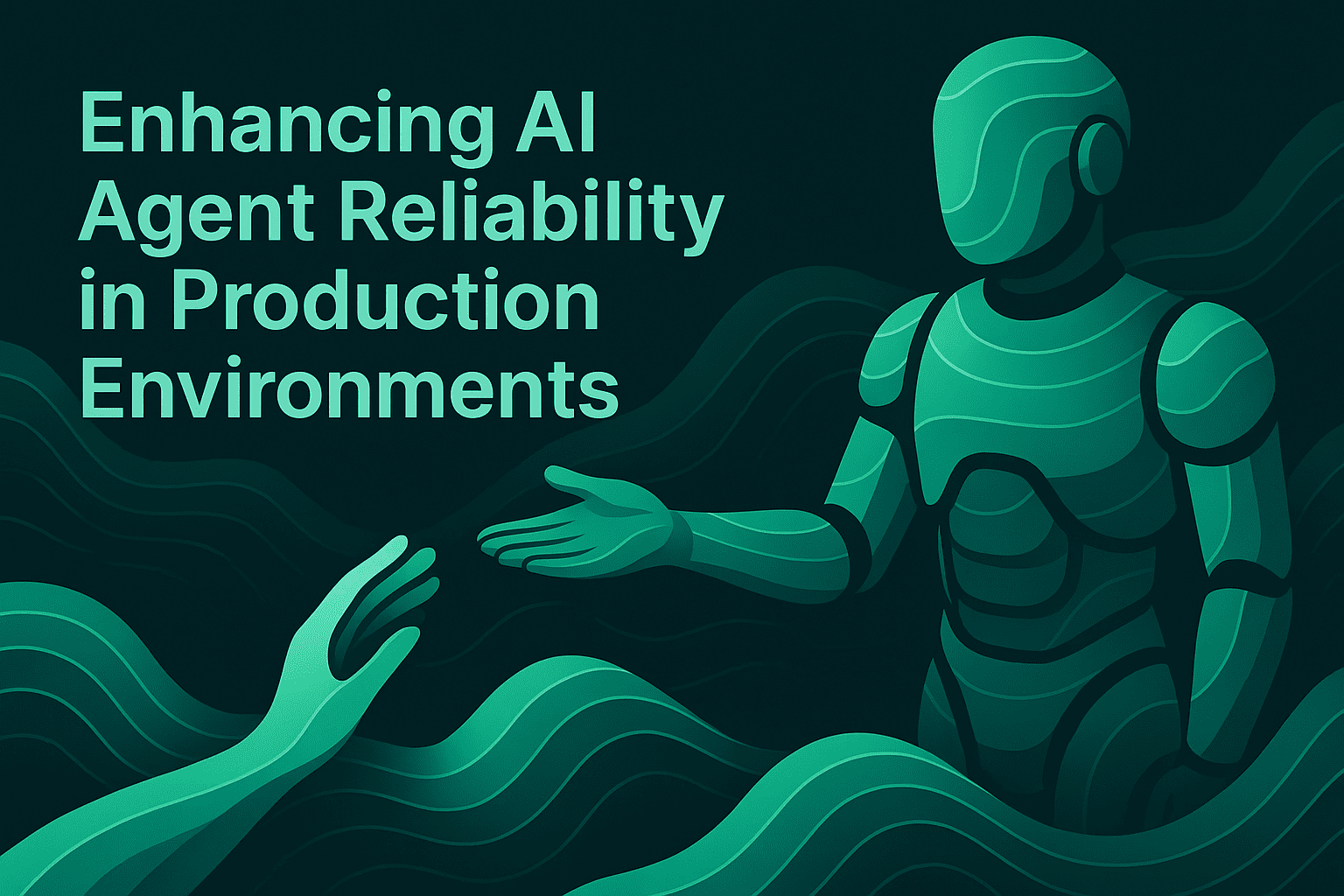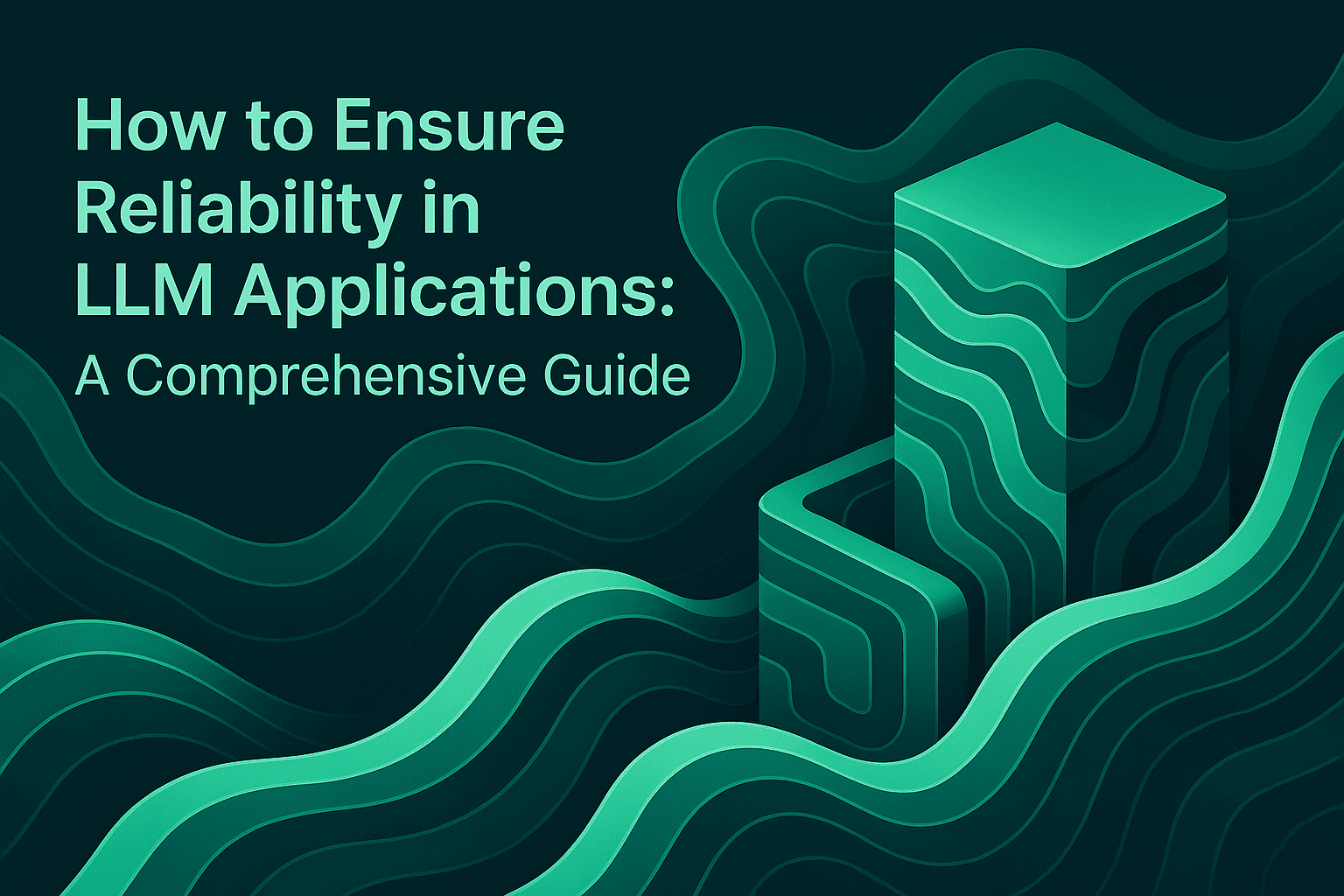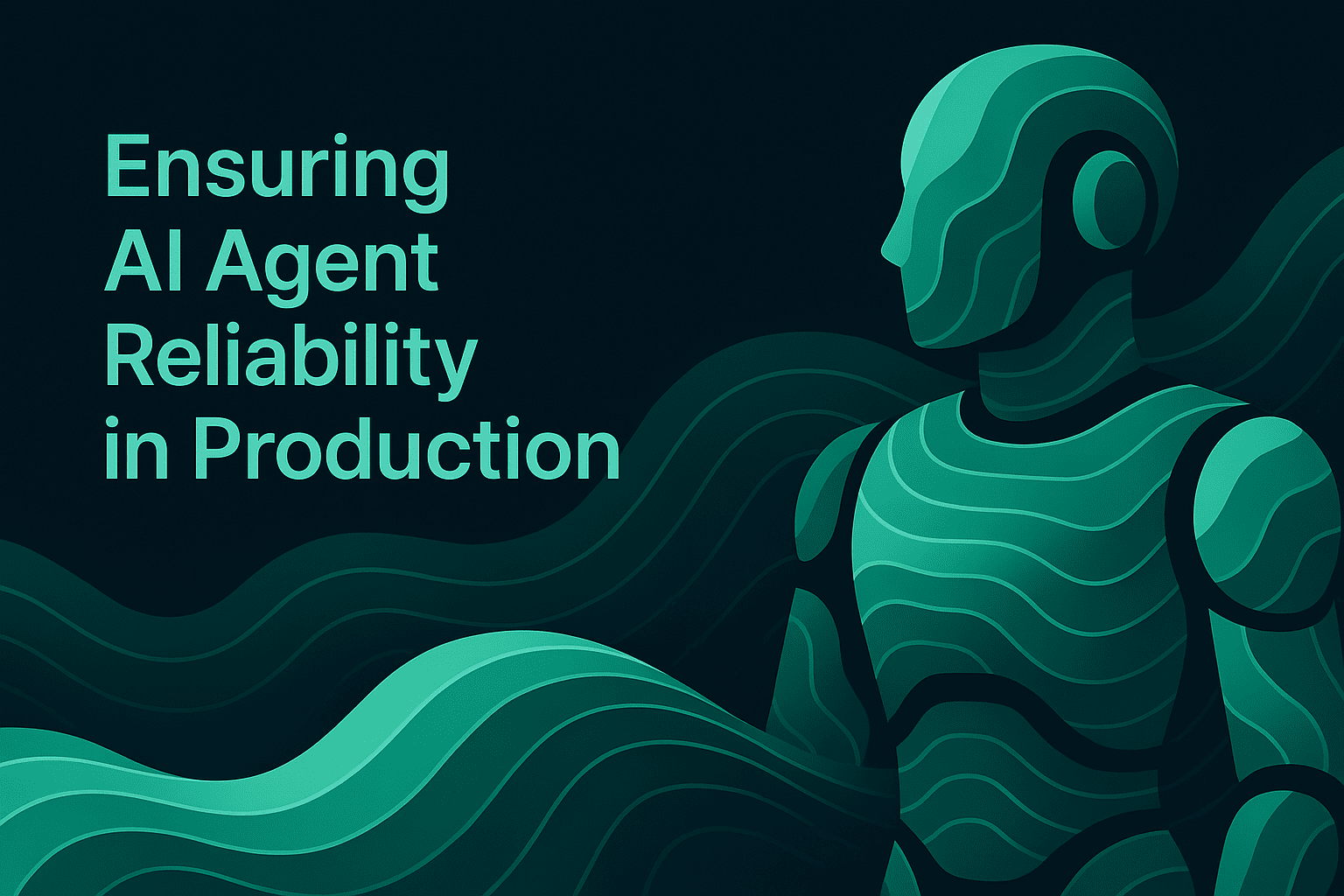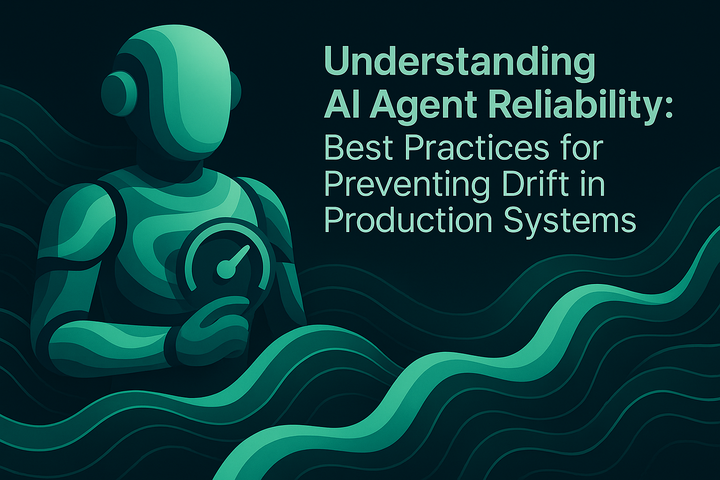Enhancing AI Agent Reliability in Production Environments

TL;DR
AI agents are increasingly deployed in production environments, yet reliability remains a critical challenge. Research shows that over 40% of agentic AI projects are expected to be canceled by 2027 due to escalating costs, unclear business value, and inadequate risk controls. Recent benchmarks indicate that leading AI models fail at office tasks 91-98% of the time, highlighting the gap between experimental success and production readiness. Building reliable AI agents requires a comprehensive approach that combines robust observability, systematic evaluation, continuous monitoring, and hallucination detection. Organizations that implement end-to-end quality frameworks with proper agent tracing, evaluation workflows, and real-time monitoring can significantly improve agent reliability and achieve measurable business outcomes.
Why AI Agent Reliability Matters in Production
Production environments demand consistent, predictable behavior from AI agents. Unlike prototype deployments where failures can be tolerated, production systems directly impact customer experiences, operational efficiency, and business outcomes.
Production AI agents face several distinct reliability challenges:
- Unpredictable performance: Agents may handle routine queries successfully but fail on edge cases or unexpected inputs, creating inconsistent user experiences
- Hallucination risks: Language models can generate plausible but factually incorrect information, particularly problematic in domains like healthcare, legal, and financial services
- Integration complexity: Connecting agents to existing systems, databases, and APIs introduces failure points that may not surface during testing
- Context drift: Agent behavior can degrade over time as data distributions change or external dependencies evolve
- Multi-step failures: Complex agentic workflows involve multiple decision points where errors can compound
Organizations deploying AI agents must move beyond proof-of-concept thinking to establish production-grade reliability standards. This requires comprehensive AI observability that provides visibility into agent behavior, systematic evaluation frameworks, and automated quality checks.
Establishing Comprehensive Agent Observability
Observability forms the foundation of AI agent reliability. Without visibility into how agents make decisions, process information, and interact with systems, teams cannot diagnose failures or optimize performance.
Distributed Tracing for Multi-Step Agents
Modern AI agents execute complex workflows involving multiple LLM calls, tool invocations, and decision points. Distributed tracing captures the complete execution path of agent interactions, enabling teams to:
- Track information flow across agent components
- Identify bottlenecks and performance issues
- Understand decision-making sequences
- Find and debug failures quickly
Maxim's observability platform provides comprehensive tracing capabilities at multiple granularities. Teams can instrument their agents using traces, spans, and generations to capture hierarchical execution details. For retrieval-augmented applications, RAG tracing enables monitoring of document retrieval quality and context relevance.
Real-Time Monitoring and Alerting
Production reliability requires immediate awareness of quality degradation. Implementing automated evaluations on production logs enables continuous quality assessment without manual review.
Teams should establish monitoring across critical dimensions:
- Response quality: Measure output relevance, accuracy, and completeness using automated evaluators
- Latency tracking: Monitor response times to ensure agents meet performance SLAs
- Error rates: Track failures, timeouts, and exception patterns
- Tool usage patterns: Analyze how agents invoke external tools and APIs
Alert configuration enables proactive response to quality issues. With Maxim AI, teams can set thresholds for specific metrics and receive notifications through integrations with Slack or PagerDuty when agents deviate from expected behavior.
Custom Dashboards for Deep Insights
Production monitoring extends beyond standard metrics. Teams need to analyze agent behavior across custom dimensions relevant to their specific use cases. At Maxim AI, Custom dashboards enable creation of tailored views that surface insights specific to business objectives.
Organizations can build dashboards that:
- Track success rates for specific agent tasks or workflows
- Compare behavior across different model versions or configurations
- Identify patterns in failed interactions
The reporting capabilities allow teams to export and analyze observability data for deeper investigation or compliance requirements.
Implementing Robust Evaluation Frameworks
Evaluation transforms observability data into actionable quality signals. While monitoring tells you what happened, evaluation tells you whether it was correct.
Pre-Production Evaluation Strategies
Before deploying agents to production, teams must validate behavior across diverse scenarios. Offline evaluation provides controlled assessment environments where agents can be tested systematically.
Maxim offers multiple evaluation approaches suited to different development stages:
- Prompt-based evaluation: For conversational agents, use the prompt playground to iterate on prompt designs and compare prompt versions against test datasets
- Endpoint evaluation: For agents exposed as APIs, configure local endpoints or endpoints on Maxim to run comprehensive test suites
- Agent-based evaluation: For complex agentic systems, use no-code agent evaluation to assess multi-turn behavior
Leveraging Pre-Built and Custom Evaluators
Comprehensive evaluation requires assessing multiple quality dimensions. Maxim provides an extensive evaluator library with pre-built evaluators covering:
AI-powered evaluators for semantic quality:
- Faithfulness: Verify responses align with provided context
- Context relevance: Assess retrieval quality for RAG systems
- Task success: Determine if agents completed intended objectives
- Agent trajectory: Analyze decision-making paths
- Toxicity detection: Flag harmful or inappropriate content
Statistical evaluators for quantitative measurement:
- Semantic similarity: Compare output similarity to reference answers
- ROUGE metrics: Measure text overlap for summarization tasks
- Tool call accuracy: Verify correct API invocations
Programmatic evaluators for structural validation:
- JSON validation: Ensure properly formatted structured outputs
- URL validation: Verify generated links are valid
- Email validation: Check email format correctness
For domain-specific requirements, teams can implement custom evaluators using business logic or integrate third-party evaluators from specialized tools.
Human-in-the-Loop Evaluation
Automated evaluators provide scalable quality assessment, but human judgment remains essential for nuanced evaluation. Human annotation workflows enable subject matter experts to review agent outputs and provide feedback.
For production systems, teams can set up human annotation on production logs to continuously collect ground truth labels. This feedback loop enables:
- Training data curation for fine-tuning
- Validation of automated evaluator accuracy
- Discovery of edge cases and failure modes
- Alignment with human preferences and business requirements
CI/CD Integration for Continuous Validation
Reliability requires treating agent quality as a first-class concern in development workflows. CI/CD integration enables automated evaluation as part of deployment pipelines, preventing regressions before they reach production.
Teams can configure evaluation gates that:
- Run comprehensive test suites on every code change
- Compare performance against baseline metrics
- Block deployments that fail quality thresholds
- Generate evaluation reports for review
Mitigating Hallucinations Through Detection and Prevention
Hallucinations represent one of the most significant reliability challenges for production AI agents. Research published in Nature demonstrates that semantic entropy-based methods can effectively detect confabulations by measuring uncertainty in generated responses.
Understanding Hallucination Types
Hallucinations manifest in multiple forms that require different detection strategies:
- Factual inconsistencies: Generating information that contradicts known facts or provided context
- Source misattribution: Claiming information comes from sources that don't contain it
- Fabricated details: Adding specific but invented details to responses
- Logical contradictions: Producing outputs that contradict earlier statements
Recent research from NeurIPS 2024 introduces efficient hallucination detection methods using internal LLM representations, achieving speedups of 45x to 450x over baseline approaches while maintaining detection accuracy.
Implementing Hallucination Detection
Production systems should implement multi-layered hallucination detection:
Context-grounded validation: For RAG applications, verify that agent responses align with retrieved documents using context precision and context recall evaluators.
Factuality checking: Use faithfulness evaluation to assess whether outputs remain grounded in provided information without introducing unsupported claims.
Consistency validation: Analyze outputs for internal consistency and logical coherence using consistency evaluators.
PII detection: Prevent agents from leaking sensitive information using PII detection evaluators.
Prompt Engineering for Hallucination Reduction
Strategic prompt design significantly reduces hallucination rates. Organizations can leverage prompt management capabilities to:
- Version control prompt iterations with prompt versioning
- Test prompts systematically using prompt evaluation
- Deploy optimized prompts with prompt deployment
- Optimize prompts automatically using prompt optimization
Prompt partials enable reusable components that encode best practices for hallucination prevention, such as explicit instructions to cite sources or acknowledge uncertainty.
Leveraging AI Simulation for Pre-Production Testing
Simulation enables comprehensive agent testing across diverse scenarios before production exposure. AI simulation provides synthetic yet realistic environments for validating agent reliability.
Scenario-Based Simulation
Teams can create text-based simulations that replicate real-world user interactions across:
- Multiple user personas with varying expertise levels
- Edge cases and adversarial inputs
- Multi-turn conversations with context dependencies
- Complex workflows requiring tool orchestration
Simulation runs execute agents against curated scenarios, generating comprehensive behavioral data for analysis. This enables teams to:
- Identify failure modes before production deployment
- Stress-test agents under high-volume conditions
- Validate handling of domain-specific requirements
- Compare agent versions objectively
Optimizing Model Selection and Routing
Model choice significantly impacts agent reliability. Organizations must balance performance, cost, latency, and failure rates across different model providers and configurations.
Multi-Provider Strategy with Bifrost
Bifrost, Maxim's AI gateway, enables unified access to 12+ model providers through a single OpenAI-compatible API. This architecture provides:
- Automatic fallbacks: Seamless failover between providers when primary models fail or experience outages
- Load balancing: Intelligent request distribution across multiple API keys and providers
- Semantic caching: Response caching based on semantic similarity to reduce costs and latency
- Provider abstraction: Single integration point that simplifies model switching
Intelligent Routing Strategies
Production systems should implement routing logic that directs requests to optimal models based on:
- Request complexity: Route simple queries to faster, cheaper models while reserving sophisticated models for complex reasoning
- Reliability requirements: Use more reliable models for high-stakes interactions
- Latency constraints: Select models that meet response time SLAs
- Cost optimization: Balance quality requirements against inference costs
Bifrost's governance features enable fine-grained control over model usage, budgets, and access policies, ensuring reliability constraints are enforced at the infrastructure level.
Experimentation for Model Selection
Before committing to specific models in production, teams should conduct systematic comparisons. Maxim's experimentation platform enables:
- Side-by-side model comparisons on representative datasets
- Quality, cost, and latency trade-off analysis
- A/B testing different model configurations
- Rapid iteration on prompt and model combinations
The prompt playground provides an interactive environment for testing model behavior, while prompt sessions organize experimentation workflows.
Building Production-Ready Data Infrastructure
Data quality underpins agent reliability. Poor data hygiene consistently ranks among the top causes of AI project failures, with Gartner predicting that 50% of generative AI projects fail due to data quality issues.
Dataset Curation and Management
Maxim's data engine provides comprehensive capabilities for:
- Importing datasets from multiple sources including CSVs, JSON, and production logs
- Curating datasets through filtering, sampling, and enrichment workflows
- Managing datasets with versioning, access controls, and organization
Teams can systematically build evaluation datasets by:
- Mining production logs for representative examples
- Synthesizing edge cases through automated generation
- Collecting human annotations through structured workflows
- Creating balanced test sets across important dimensions
Context Source Management
For RAG-based agents, retrieval quality directly impacts reliability. Context sources enable teams to:
- Connect knowledge bases and document repositories
- Version knowledge sources to track changes
- Test retrieval quality against evaluation datasets
- Optimize retrieval parameters for accuracy and relevance
Proper context management ensures agents have access to accurate, up-to-date information and reduces hallucination risks.
Local Dataset Development
During development, teams can work with local datasets before uploading to Maxim, enabling rapid iteration and testing in development environments.
Conclusion
AI agent reliability in production requires comprehensive engineering practices spanning observability, evaluation, monitoring, and organizational processes. While the current landscape shows high failure rates, organizations that implement systematic quality frameworks achieve measurable success.
The key elements of reliable agent deployment include:
- Comprehensive observability through distributed tracing and real-time monitoring
- Robust evaluation frameworks combining automated and human-in-the-loop assessment
- Hallucination detection and mitigation using multi-layered validation approaches
- Pre-production simulation to validate behavior across diverse scenarios
- Intelligent model routing with fallback strategies and cost optimization
- Production-grade data infrastructure ensuring quality inputs and context
- Cross-functional processes that embed quality throughout the development lifecycle
Maxim provides an end-to-end platform that addresses these requirements holistically, enabling teams to ship AI agents reliably and more than 5x faster. By integrating experimentation, simulation, evaluation, and observability into unified workflows, organizations can move confidently from prototype to production.
Ready to enhance your AI agent reliability? Schedule a demo to see how Maxim can help your team ship production-ready agents with confidence, or sign up to start building more reliable AI applications today.


